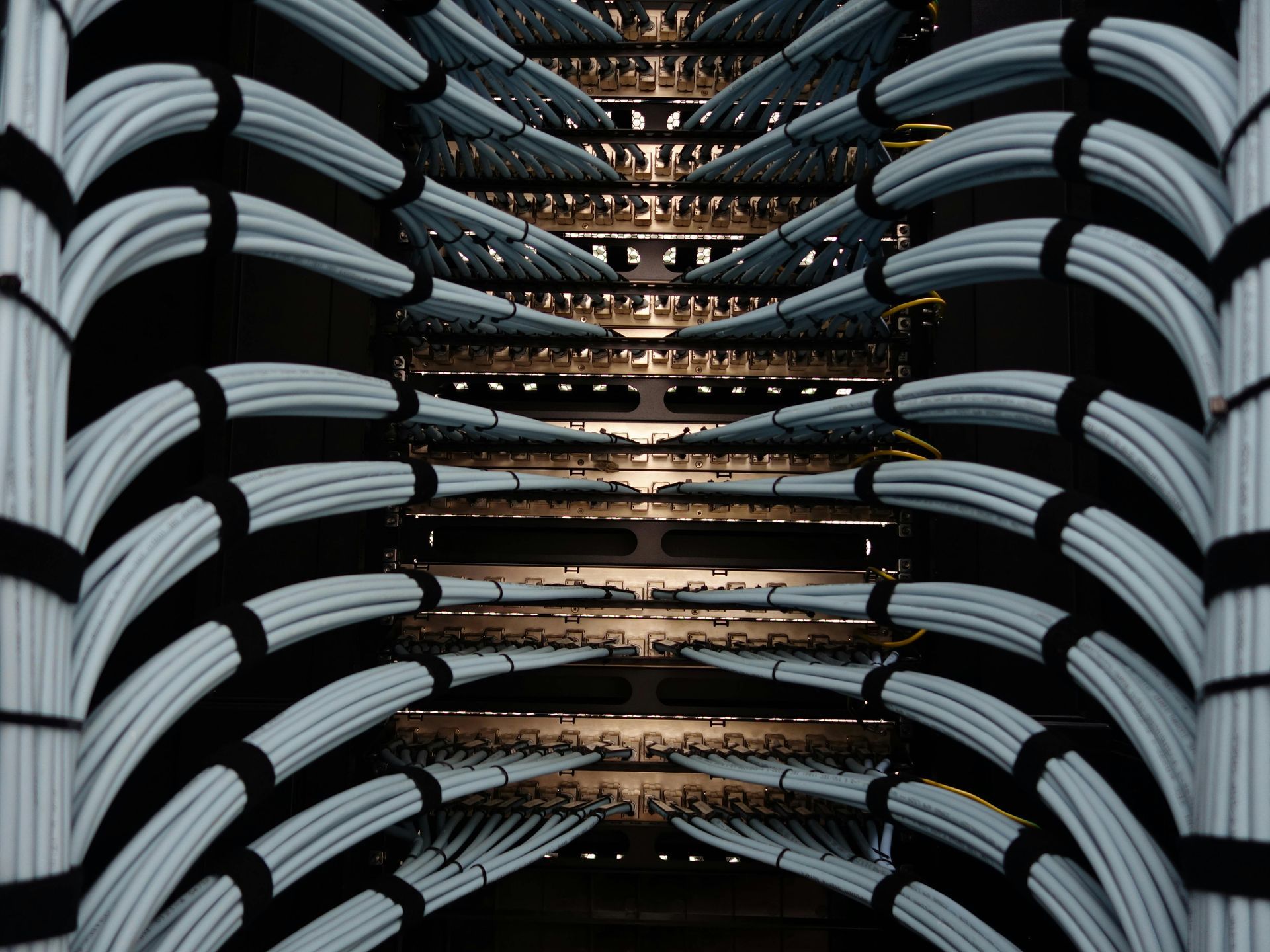High-Speed Internet Utilizing Fiberoptic Cables for MDUs

In today’s competitive rental market, high-speed internet is a necessity that ranks alongside essential utilities like water and electricity. For multiple dwelling units (MDUs), such as apartment complexes, offering reliable and fast internet can significantly impact tenant satisfaction and occupancy rates. Fiberoptic internet, known for its superior speed and reliability, also brings a key advantage that many property managers may overlook: infrastructure flexibility. Fiberoptic solutions can be tailored to fit the layout of MDUs, providing better scalability and adaptability compared to traditional broadband. In this post, we’ll explore how fiberoptic infrastructure can be customized for MDUs, allowing property managers to meet current needs while preparing for future growth.
The Importance of Flexible Internet Infrastructure in MDUs
The demands of today’s tenants have evolved significantly with the rise of remote work, streaming, and the proliferation of connected devices like smart home technologies. High-speed, reliable internet is no longer a luxury—it’s a top priority for many renters. MDUs, which house multiple residents with diverse internet needs, require adaptable solutions to ensure all tenants receive a consistent online experience. Fiberoptic internet is uniquely positioned to meet these needs, offering a scalable solution that can be tailored to the specific layout of each property.
Traditional broadband systems, which rely on copper cables, often struggle with scalability and adaptability. These systems are constrained by distance limitations and signal degradation over long spans, which can make it difficult to provide consistent service throughout a large or complex property. Copper-based networks are less capable of supporting the high bandwidth needs of today’s internet users, especially in buildings where multiple tenants are streaming, gaming, or working online simultaneously. This is where fiberoptic’s flexible infrastructure becomes a game-changer, offering a robust alternative that can be precisely tailored to the layout of each MDU.
How Fiberoptic Solutions Adapt to Different MDU Layouts
One of the key strengths of fiberoptic internet is the ability to customize the installation to fit the unique needs of each MDU. Fiber offers various deployment methods, such as Fiber to the Home (FTTH), Fiber to the Building (FTTB), and Fiber to the Unit (FTTU). Each option can be tailored to ensure that residents experience optimal internet speeds and reliability, regardless of their unit’s location within the property.
For example, FTTH delivers fiber directly to each apartment, ensuring maximum speed and performance. FTTB is ideal for larger buildings, bringing fiber to a central location within the building and using existing wiring for distribution to individual units. This flexibility allows property managers to select the installation method that best balances performance and cost, ensuring that the entire property benefits from fiber’s high-speed capabilities.
Fiberoptic solutions are especially advantageous for MDUs with diverse architectural designs. Whether dealing with a high-rise apartment building or a sprawling garden-style complex, fiber can be installed in a way that minimizes disruption and maximizes performance. For high-rise buildings, fiber can be installed vertically through the building’s risers, providing each floor with access to high-speed connectivity. In garden-style complexes, fiber can be routed through outdoor conduits, ensuring that each unit receives a reliable connection without invasive installations.
Consider a large MDU that faced challenges with its existing copper-based internet infrastructure due to the spread-out nature of its buildings. After switching to a fiberoptic solution, the property manager chose an FTTB approach, bringing fiber to each building’s basement and using the existing internal wiring for last-mile delivery. This approach minimized installation disruptions while providing residents with a significant speed boost. The result was a more consistent internet experience for tenants and a notable reduction in complaints related to connectivity issues.
Scalability: Preparing MDUs for Future Growth
One of the biggest advantages of fiberoptic infrastructure is its ability to scale seamlessly as a property’s needs evolve. As more residents move into a building or as tenants increase their internet usage, fiber can handle the additional demand without compromising performance. Property managers can increase bandwidth or upgrade speeds without the need for significant infrastructure changes, ensuring that the network keeps pace with residents’ growing expectations.
Today’s households use more connected devices than ever before, from smart speakers and thermostats to security cameras and gaming consoles. This surge in device usage places a significant load on internet networks, especially during peak hours. Fiber networks are built to handle this increase, offering the bandwidth needed to ensure that each device operates smoothly. For MDUs, this means that tenants can enjoy a consistent connection even when multiple people in a unit are online at the same time.
While the initial cost of installing a fiberoptic network may be higher than traditional broadband, the long-term savings are significant. Fiber’s durability means fewer maintenance costs and its scalability prevents the need for frequent infrastructure upgrades. Property managers who invest in fiber can benefit from a future-proof system that saves money over time while enhancing the tenant experience. This cost efficiency is especially valuable for MDUs, where budgets often need to balance the needs of multiple residents.
Enhancing Tenant Experience with Customized Fiber Networks
Fiber’s adaptability allows it to provide consistent connectivity even in parts of a building that might traditionally suffer from weaker signals. With fiber, property managers can ensure that every corner of an MDU receives the same high-speed internet, eliminating dead zones that frustrate tenants. This is particularly beneficial for MDUs with complex layouts, where traditional broadband might struggle to maintain signal strength across multiple floors or buildings.
Fiberoptic internet isn’t just for individual units—it can also be extended to support common areas like lobbies, co-working spaces, fitness centers, and outdoor lounges. Reliable internet in these spaces enhances the overall living experience, making the MDU more appealing to potential tenants. This is especially important in today’s world, where many residents expect fast internet access wherever they are, whether they’re working in a community lounge or streaming a class in the gym.
As hybrid and remote work models become more common, tenants increasingly value reliable internet for work-from-home setups. Fiber’s low latency and consistent speeds make it ideal for video conferencing, cloud-based work, and other activities that require a stable connection. For property managers, offering fiber can be a strong selling point for attracting remote workers who prioritize internet quality when choosing a place to live.
Why Fiberoptic Flexibility is a Strategic Investment for Property Managers
Investing in fiberoptic internet is a strategic decision that prepares MDUs for future technological advancements. As new technologies emerge, such as augmented reality, virtual reality, and advanced IoT systems, the demand for high-speed, low-latency internet will only grow. Fiber’s adaptability ensures that properties remain competitive and can accommodate these innovations without needing a complete overhaul of their network infrastructure.
Managing the internet needs of a large property can be complex, but fiber’s flexibility simplifies many aspects of this task. Fiber’s ability to support multiple configurations and its low maintenance requirements reduce the burden on property managers, freeing up time and resources for other priorities. Additionally, fiber networks are less prone to service interruptions, resulting in fewer tenant complaints and a smoother management experience.
A mid-sized MDU that invested in a scalable fiberoptic network saw significant long-term benefits. Not only did tenant satisfaction improve due to the enhanced internet experience, but the property also saw a 15% increase in lease renewals over two years. The fiber infrastructure allowed the property manager to upgrade speeds as needed, ensuring that the building remained competitive even as internet demands grew. This case highlights how a scalable fiberoptic network can be a valuable asset for maintaining a strong market position.
Conclusion
Fiberoptic internet offers unparalleled flexibility for MDUs, allowing property managers to customize networks to fit their unique layouts while preparing for future growth. Its ability to adapt to different building types, support community spaces, and scale as demand increases makes fiber a smart investment for any MDU looking to attract and retain tenants. By choosing a flexible, future-proof solution, property managers can ensure that their properties remain desirable in an ever-evolving rental market.
